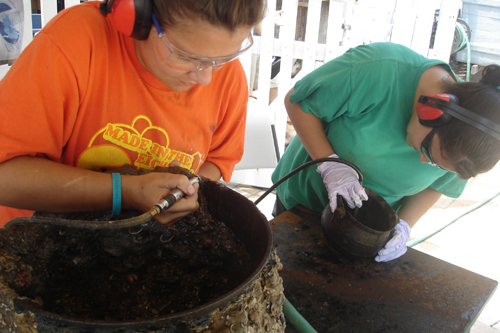
LAMP intern Annie Carter (left) and LAMP volunteer Julie Powell (right) use airscribes to carefully clean two cast iron cauldrons of two centuries of encrustation. Visitors to the St. Augustine Lighthouse & Museum can see this activity for the remainder of August.
Today visitors to the St. Augustine Lighthouse & Museum were treated to a rare opportunity: the chance to see archaeological conservators cleaning artifacts recovered from a late 18th century shipwreck. We have been making a big push in recent weeks to physically clean some of the many concretions, or heavily encrusted artifacts, that we have discovered from the Storm Wreck, which dates to the late 1700s.
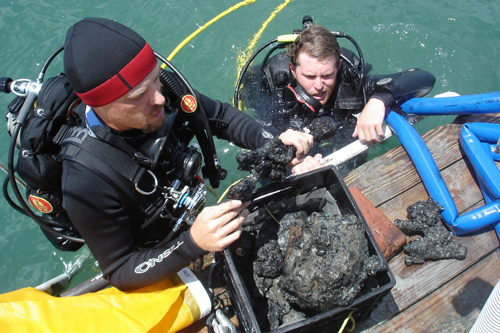
These objects are typical of the encrusted artifacts, known to archaeologists as concretions, that have been recovered from the late 1700s Storm Wreck. These were all from a single 1 meter by 1 meter unit on the shipwreck site excavated in July 2012.
When we first recover concretions or other artifacts, the most important thing we do is to keep them wet. So the two cauldrons that we were working on today have been in wet storage since 2010, slowly desalinating (leeching out their embedded salts) as they have been subjected to soaking in regularly changed fresh water baths. The next step in the cleaning process is to generate an x-ray image of the objects. Both of these cauldrons were cat-scanned by the Imaging Center at Flagler Hospital in October 2010. The resulting x-ray image is used by conservators as a “road map” once they begin physical cleaning with air scribes.
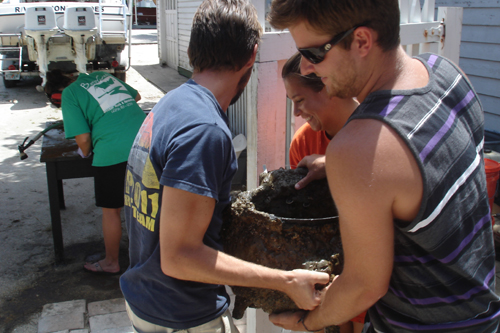
This large cauldron is heavy!
Today we are continuing to airscribe the smallest, or “baby” cauldron as we affectionately call it, and we are starting to airscribe the large cauldron for the first time. The large cauldron is the largest we have recovered, and was the first recognizable object found on the Storm shipwreck site on the initial dive of discovery in August 2009. It was recovered on 14 July 2010 to a crowd of museum VIPs and reporters. The “baby” cauldron was also recovered during the 2010 field season, and is the smallest cauldron recovered to date. At least six cast iron cauldrons have been recovered from the shipwreck so far. These would have been an item used every day by colonial St. Augustinians, to cook meals in. There was no ironworks here capable of making them, so they had to be brought in on ships for sale in the local markets.
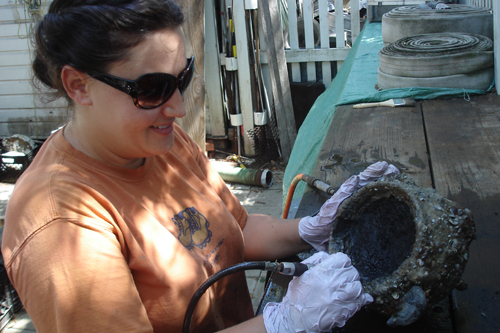
LAMP volunteer Julie Powell, who will be starting graduate school at East Carolina University this fall, started work on the baby cauldron on 25 July. At that point the cauldron was completely encrusted, and was filled with a solid, rock-like substance. For the last two weeks she and other LAMP laboratory volunteers have been working away, tediously chipping away at the concretion and slowly exposing the original surface of the artifact.
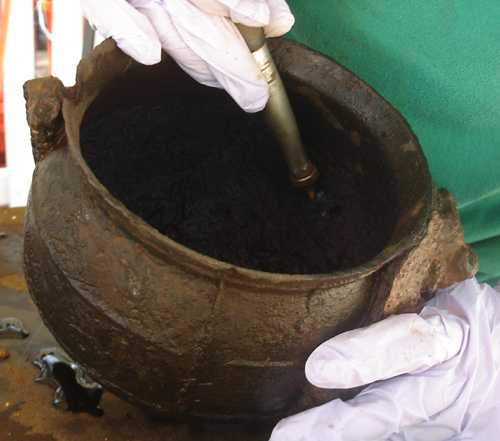
Now look at the cauldron! A lot of progress has been made, and almost the entire exterior surface is exposed, revealing the original casting seams (which, unbelievably, could be discerned in the cat scan imagery) and the tiny ears from which a wire handle once hung. She is still chipping away at the interior substance, which has revealed some fragments of wood and fabric, so she is proceeding slowly and carefully.
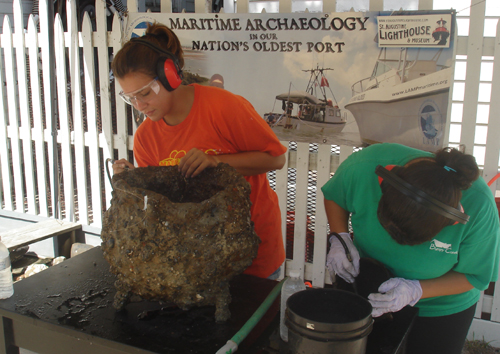
Annie, at left, has tackled the largest cauldron. Annie is an undergraduate student at New College in Central Florida, and she has worked as a LAMP intern and also was a student in the June Field School.
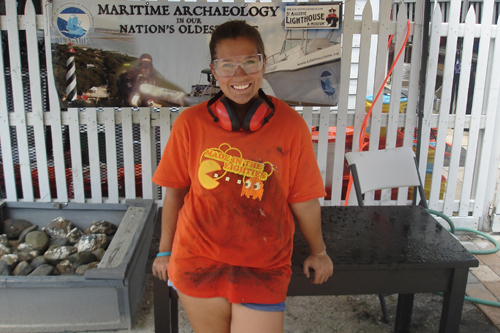
Airscribing is dirty work! But Annie is up to the task!
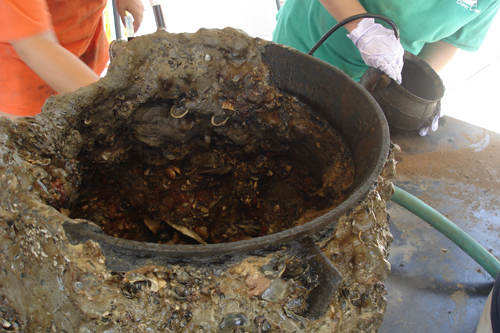
After a few hours Annie has cleared much of the rim of the large cauldron, and one of its “ears.”
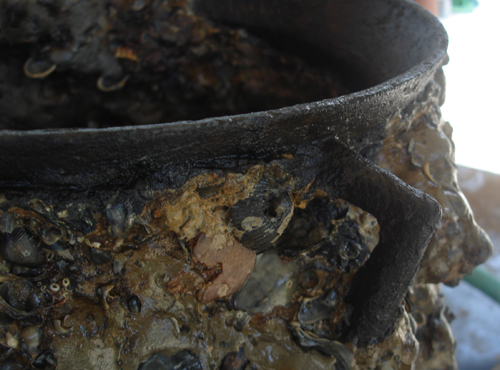
Here is a detail photograph of the large cauldron’s ear and rim.
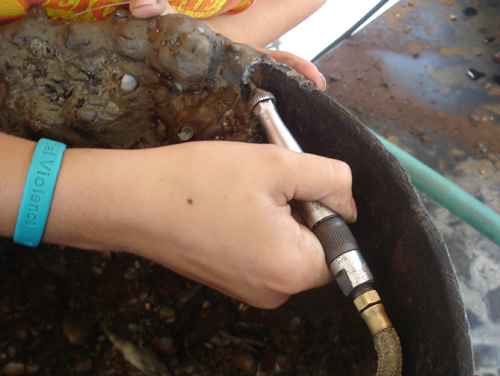
Here is a closer look at the pneumatic air scribe in action. Its about the size and shape of a ball point pen.
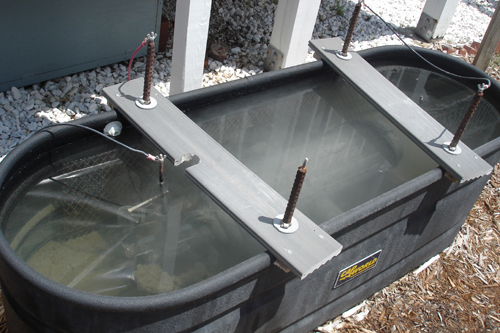
Once the objects are completely clear of concretion, they will undergo electrolytic cleaning, which means they will be suspended in a vat of water and soda ash (an electrolytic solution) where an electrical current will be fed through them to force the remaining salts out from the iron. This process can take a year or more, but afterwards they can be safely dried out and put on display. The vat seen above contains a carronade or small cannon from the Storm Wreck, which is currently undergoing electrolytic treatment.
Stay tuned to the LAMPosts Blog for the latest updates on artifact cleaning and other shipwreck discoveries! To learn more about the shipwreck, visit LAMP’s Storm Wreck webpage.

